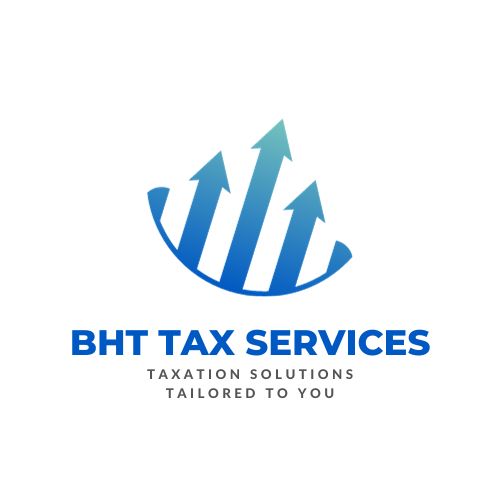
Tax preparation can be a daunting and time-consuming task, but with the right approach, it doesn’t have to be. Whether you’re filing as an individual or a business, preparing your taxes correctly can save you time, reduce your stress, and ensure you avoid costly mistakes. In this guide, we’ll break down everything you need to know about tax preparation, from understanding tax documents to utilizing tax preparation services, and help you navigate the complexities of filing taxes.
Why Tax Preparation is Crucial for Financial Success
Proper tax preparation goes beyond merely filling out forms. It is an essential aspect of your financial strategy that ensures compliance, optimizes your deductions, and maximizes your potential refunds. By organizing your finances and gathering necessary documents early, you set yourself up for success and avoid last-minute errors that could lead to audits or missed opportunities for savings.
When done correctly, tax preparation can:
- Ensure compliance with tax laws
- Minimize tax liability through deductions and credits
- Maximize refunds
- Prevent penalties for errors or omissions
- Keep records organized for future tax years
Understanding Tax Documents: Key Forms You Need to Know
Before diving into the process of tax preparation, it’s crucial to understand the key documents and forms you’ll need. These documents vary depending on your employment status, income sources, and potential deductions. Below is a list of common tax documents:
1. W-2 Forms
The W-2 form is issued by your employer and reports your annual wages and the amount of taxes withheld. This form is essential for individual tax filers who are employed by a company.
2. 1099 Forms
The 1099 form reports income from freelance work, investments, or other sources outside of traditional employment. If you’re a freelancer, independent contractor, or have investment income, you’ll likely receive this form.
3. 1040 Form
The 1040 form is the primary tax form used by individuals to file their annual income tax returns. It details your income, deductions, credits, and the amount of taxes owed or refunded.
4. 1098 Forms
The 1098 form is used to report mortgage interest paid, which is often deductible on your tax return. This is crucial for homeowners who are looking to take advantage of tax breaks related to homeownership.
5. Other Supporting Documents
Additional forms may include receipts for business expenses, medical expenses, or charitable donations, as well as statements for interest, dividends, and retirement plan contributions. Organizing these documents ahead of time can streamline the process.
Tax Preparation: Step-by-Step Process
Step 1: Gather All Necessary Documentation
Before you even begin filling out forms, gather all relevant tax documents. This includes excellent bookkeeping, W-2s, 1099s, receipts for deductions, and any other financial records that pertain to your income, expenses, and savings. The more organized you are, the smoother the process will be.
Step 2: Understand Tax Deductions and Credits
One of the keys to successful tax preparation is understanding the available deductions and credits. These tax benefits can reduce your taxable income or the amount of taxes owed. Some common deductions and credits include:
- Standard Deduction: A flat deduction based on your filing status. It’s often a better option if you don’t have many deductible expenses.
- Itemized Deductions: If you have significant medical expenses, mortgage interest, or charitable donations, itemizing might provide more tax relief.
- Child Tax Credit: A credit designed to assist taxpayers with dependent children, offering a direct reduction in tax owed.
- Education Credits: If you’re paying for higher education, you might qualify for credits such as the American Opportunity Credit or the Lifetime Learning Credit.
- Business Deductions: Small business owners can deduct a wide range of business-related expenses, including office supplies, travel, and equipment.
Step 3: Choose the Right Filing Status
Your filing status can significantly affect the amount of taxes you owe or the refund you receive. The IRS offers five filing statuses, each with its own tax implications:
- Single: For individuals who are not married or legally separated.
- Married Filing Jointly: Married couples who file a joint tax return. This often results in a lower tax rate.
- Married Filing Separately: Couples who file separate returns. This is often beneficial in certain scenarios but may lead to higher taxes.
- Head of Household: For individuals who are unmarried and support a dependent, this status offers a higher standard deduction.
- Qualifying Widow(er): This status applies to widows or widowers who have dependents and want to take advantage of tax benefits similar to married filing jointly.
Step 4: Complete the Tax Forms
Once you’ve gathered your documents, it’s time to complete your tax forms. For many individuals, this involves filling out the 1040 form. Be thorough and ensure that all income, deductions, and credits are properly reported.
For more complex tax situations, such as owning a business or dealing with large investment portfolios, you may need to fill out additional schedules and forms. Common forms include:
- Schedule A: For itemized deductions
- Schedule C: For business income and expenses
- Schedule D: For capital gains and losses
- Schedule E: For rental income and other sources of passive income
Step 5: Double-Check Your Work
Before submitting your tax return, carefully review all the information. Ensure that all income is reported accurately, deductions and credits are claimed correctly, and the correct filing status is chosen. A simple mistake can lead to costly penalties or missed refunds.
Tax Preparation Services: Should You Hire a Professional?
While many individuals and businesses can manage tax preparation on their own, there are instances when hiring a professional might be the best choice. Certified Public Accountants (CPAs), tax attorneys, and enrolled agents have the expertise to handle complex tax situations and ensure that you take full advantage of available deductions and credits.
Here are some reasons why you might consider professional tax preparation services:
- Complex Tax Situations: If you have multiple sources of income, own a business, or have significant investments, a tax professional can navigate the complexities for you.
- Audit Protection: A tax expert can provide assistance if you’re audited by the IRS, ensuring that all your records are in order.
- Time Savings: Preparing taxes can be time-consuming, and hiring a professional allows you to focus on other important matters.
- Maximizing Refunds: Professionals can help identify deductions and credits that you may overlook, potentially increasing your refund.
Tax Preparation Software: A Convenient Solution for Individuals
For those who prefer a do-it-yourself approach, tax preparation software has become an invaluable tool. Programs like TurboTax, H&R Block, and TaxAct simplify the filing process by guiding users through each step and automatically checking for errors.
These software programs offer several benefits:
- Ease of Use: Step-by-step guidance makes it easy for individuals to file their taxes without professional help.
- Accuracy Checks: Software can detect common mistakes and flag them before submission.
- Automatic Updates: Tax laws change regularly, and tax software is updated to reflect these changes.
- Cost-Effective: While some tax preparation services can be expensive, software programs offer affordable options for filing simple returns.
Tax Filing Deadline: What You Need to Know
It’s essential to keep track of the tax filing deadline to avoid penalties. The IRS typically requires taxes to be filed by April 15 of each year. However, this date can be extended if it falls on a weekend or holiday.
If you need more time to prepare your taxes, you can request an extension. Filing an extension gives you an additional six months to file, but it does not extend the deadline for paying taxes owed. If you owe taxes, you must pay by the original deadline to avoid interest and penalties.
Conclusion: Take Control of Your Tax Preparation Today
Tax preparation doesn’t have to be overwhelming. By understanding the necessary documents, choosing the right filing status, and considering the use of professional services or tax software, you can ensure that your taxes are filed accurately and on time. Remember, taking a proactive approach to tax preparation can save you money and give you peace of mind during tax season.
